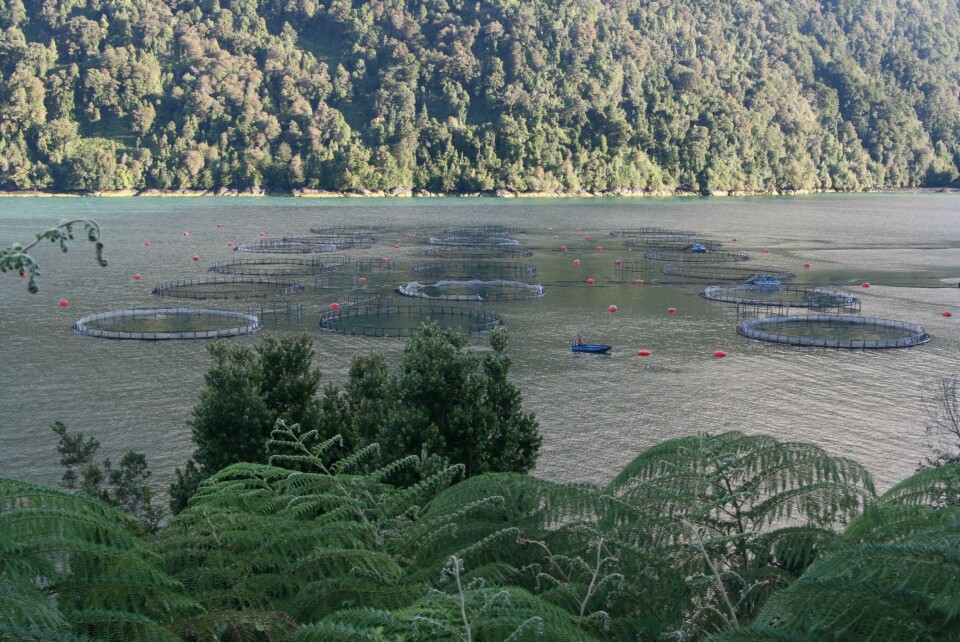
Price and blooms hit Camanchaca
Despite posting a US$ 1.4 million profit in its salmon division in Q1, Camanchaca suffered from lower average prices compared to Q1 2015 and the microalgae blooms that affected the region of Los Lagos.
The company said it was favored by a positive valuation of biological asset or fair value of US$ 14.5 million in Q1 2016, which compares favorably with US$ 800,000 in Q1 2015.
Meanwhile, the price of Atlantic salmon in Q1 2016 was 2 per cent higher than the previous quarter, averaging US $ 4.2/kg WFE. However, this value is 12 per cent lower than Q1 2015. The company expects prices to continue increasing this year due to lower global supply, surpassing last year's prices and reducing its distance with Urner Barry and SalmonEx indexes during Q2 this year.
In turn, under Other Incomes and Expenses, Camanchaca posted a loss of US$ 5.8 million, which is an estimation of the losses caused by Harmful Algal Blooms (HABs) last summer and not covered by insurance, while it reported a positive effect of US$ 1.6 million from the insurance covering the destruction of its hatchery and smolt farm 'Petrohué', caused by the eruption of the volcano Calbuco last year.
Biology, ex-cage cost and harvests
According to information published in its latest quarterly report, the sanitary conditions in Camanchaca farms were impacted by episodes of low oxygen and SRS, “most likely linked to El Niño” said the company. This scenario was especially complex in the neighborhood of Comau, exhibiting an even stronger decline in February due to HABs. Mortality in open and closed cycles reached 25.8 per cent, compared with 1.66 per cent in Q1 2015.
Ex-cage costs were OF US$ 3.66/kg in Q1 2016 versus US$ 2.95/kg in Q1 2015, although this index showed improvement compared to US$ 3.72 in Q1 2014 (considering that life cycles salmon imply two years). The company noted that these costs do not include catastrophic mortality from HABs.
Harvest volumes and sales declined about 20 per cent in the comparison between quarters, totaling 9,091 and 9,036 tonnes, respectively.
Algal blooms
Those HABs that invaded the Reloncaví sound and other adjacent areas in February and March affected three farms of Atlantic salmon belonging to Camanchaca: 'Puelche' with 856,000 fish; ‘Mañihueico’, with 984,000 fish; and ‘Contao’, with 1,078,000 fish, all of them weighing between 1.6 and 2.9 kg, which were to be harvested between April and September this year. The final survival in these sites was 197,000 fish, with an average weight of 1.74 kg, which will continue being farmed until the end of their cycle. These mortalities represent a decline of close to 14,000 tonnes WFE in Camanchaca harvests in 2016 and about one third of the company annual harvest expectations before the HABs.
After considering insurance, the company estimates that the direct impact on results for 2016 will be between US$ 5 and US$ 7 million, while provisions were of US$ 5.8 million this quarter.
Crisis in Chiloé
Finally, Camanchaca said that blooms of Paralytic Shellfish Poisoning (PSP) in the region of Los Lagos, which were followed by social conflict and roadblocks in the area, stopped their harvests, production and sales of all its fresh products. However, the company said that “to the date of publication of these financial statements, transportation flow has been restored.”
The company has taken steps to mitigate the financial impacts caused by this situation, which has impacted its production of salmonids and mussels, causing raw material losses estimated between US$ 1 and US$ 1.5 million.























































